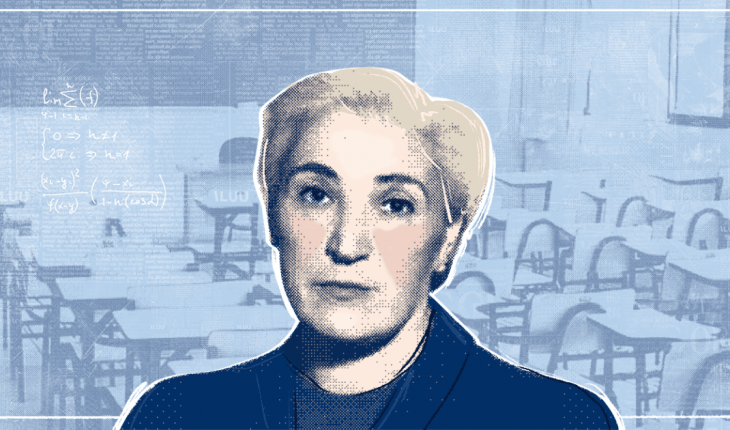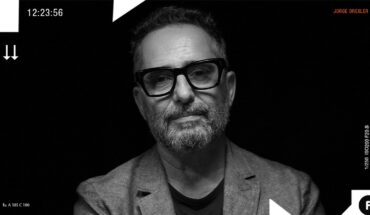If we mention Olga Cossettini unfailingly our thinking moves to school education; but not just any kind of education. The rosarina born in San Jorge, a small town in Rosario, Santa Fe, was a teacher and educator, and dedicated her life to transforming the traditional school. What distinguished her was how she managed to trot the Orthodox formats by enhancing the stimulation and creativity of children. She wasn’t alone, though. Although Olga was the head of this proposal, her sister Leticia was the hands, and in that educational practice she brought arts such as choir, theatre, puppets, dance, poetry and music. Under this doctrine the students had contact with nature, as it was she who promoted the famous excursions to parks and squares. But in addition to schoolwork outside the classroom, Olga fostered ongoing dialogue between the ward and school, the use of art as a teaching resource, the aesthetic linkage of children with the environment, and she did so with the aim of becoming agents of culture.
“In that society that is school, the child moves, acts, is a living cell; be individual nourished by the social element that is the class, the school community. By acting he acquires knowledge of himself, of his inner forces and forms his personality that every day manifests itself with his own profiles, original, different from that of others; but at the same time the need to link up, to seek contact, to be part of society is accentuated,” Olga said in the book ‘In The Child and His Expression’, published in 1938.This current adopted by the eldest of the Cossettini sisters and which began to develop on the hinge of the nineteenth and twentieth centuries for more than that its higher density gravitated in the interwars , is named after New School, Active School or Escolanovism, which proposes an acute criticism of traditional pedagogy as well as the privilege granted to the infant as a subject and not as an object or table of learning. Olga Cossettini began this experience with a pilot at the Normal School “Domingo de Oro”, located in the city of Rafaela, Province of Santa Fe and then realized at School No. 69, “Dr. Gabriel Carrasco”, of the city of Rosario located in the heart of the Alberdi neighborhood, when Olga achieved the position of Director, back in 1935.
A day at Olga Cossettini’s school
“My memories there are happy. A school with land yard, chickens, rabbits, orchard, an important cooperative center, plants… I was very happy there. We were always greeted with a smile, in a good way, inviting us not to miss,” says Amanda Pacotti, former student of the historic Carrasco School and heir to Cossettini’s legacy.” There I first came across a microscope and a magnifying glass… a whole world for me. It was wonderful to be able to observe the snails that gathered in the yard on rainy days and watch the water run along the edges of the leaves,” he says, “We had no desk but hexagonal tables and a sand table that served us both to play and to be able to build the riverbed. We all shared, we all participated,” she recalls in dialogue with Filo.News. He used self-correction a lot or if not your partner’s correction. Her strategy was listening, reflection and that deep respect for each of the boys.”
Amanda Pacotti, former student of the historic Carrasco School and heir to Cossettini’s legacy. Photo: Amanda Pacotti
“There was an open library where we went for the pleasure of reading not to accomplish a task. Even today I can describe the perfume I felt, the smell of those old books that I later knew were personal books from Olga and Leticia’s library that they offered to the popular library during their management,” he explains, and with his account he takes us to 1948.For breaking the barrier of encyclopedism proposed by the traditional school “we were said to have learned nothing , but it wasn’t true, it prepared us to face the things of life,” Amanda refutes. She says: “I was able to enter Normal 1 and take the 5 years of normal national teacher without hassle. No shine but no failure. I was able to receive myself happy and so I was a teacher.” Of course, Olga, that tall, elegant white-haired woman whom she defines as “beautiful,” “very gentle” and “always reading,” had to see in her decision to choose teaching as the means to “make a living.” “He marked me. She at the address where she worked always had the door open. It was an open-door school, not a fence school. It was a bridge for both students as for the community. I liked to stop by to spy on her, to see her,” Pacotti says.
Later, the pedagogical proposal that the teacher Santafesina implemented at the Carrasco school began to receive the onslations of the policies of the forties. In 1944 the school lost the experimental character and in 1950 Olga left the classrooms. Since then, his work has been strengthened in the writing and publication of books, in editorial management and also in the educational administration in different Argentine provinces. “Olga once told me that I had an obligation of much or little, good or bad, to give back to the community what I had received,” recalls Amanda, who is currently coordinator of the Cossettini Network, a means through which the experience of teachers Olga and Leticia is disseminated. The idea arose from Olga’s death on May 23, 1987. That day, next to the coffin, she realized that “the system was not going to easily recognize what that experience was if it wasn’t resumed by alumni.” The sisters, with their conservative, nationalist and Catholic profiles, were the visible faces of an educational project that expanded beyond the boundaries of the Alberdi neighborhood, the province and the country. It was success that led them to their expulsion, their ideological positioning being “progressive left” contrary to the “populist and nationalist” government on duty. They were left without work and homeless but with the affection of the inhabitants of the Alberdi neighborhood, who in solidarity, built them a house.
Revolutionizing teaching
“They didn’t correct with red and wrote or taught to read and write on sand tables which allowed kids to erase so that there wouldn’t be the error left in a notebook as it usually is today. There was an assessment of the child’s mistake. The different and the affectivity were respected. In addition, they broke with that rigid school that had been considering schedules and spaces, and proposed flexibility,” analyzes Carina Cabo, Rosario’s Secretary of Culture and Education, in dialogue with Filo.News.And stresses: “Another important element is that the teacher runs from that place to become a master guide who respected the child’s interest, his personality and valued what the child was doing in his classroom , stimulating it, enhancing its creativity and, in turn, having a very strong contact with nature.” Although Olga and Leticia were not the founders of this pedagogical experience, as there are teachers from different parts of the world who marked backgrounds on these practices in the nineteenth century, they were responsible for showing a paradigm shift in order to think about different experiences related to teaching in Argentina. And while many teachers today apply these themes, there are still vestiges of the traditional school.
“Today we still have the teachers at the front, the students sitting looking behind each other at the back of the partner’s neck. That keeps the teacher putting himself in the place of being able to know. Instead, they ran and put themselves more in the place of pedagogical authority and not so much authority in knowledge,” explains the Secretary. I regret that this experience which I believe was wonderful and that the critical school, from the 1960s on, has been able to complement them, has not been able to go viral. Obviously we see it in practice, since there are many teachers who among all their readings can appropriate those ideas and carry them out, but depend on the goodwill of the teacher. It is essential that from the national state and provincial governments they cause a radical change in the school.” He continues: “The school must serve to develop creativity, to teach to speak, to learn to listen, for children to develop all their potential, so that we may respect their limitations and, in turn, to develop multiple intelligences. All this that the Cossettini sisters promoted and that was driven from the world with some experiences, we must resume them and that states take account of this in order to make a paradigm shift in terms of spaces and times in school. We have to break with this traditional look of the 40-minute classes, if today we know that a person cannot pay attention more than 20. There are different ways to see intelligence. And I think we need to be able to incentivize the child to develop intelligence based on their interests and context. That is where the state has to empower and serve as a mediator. It’s funthat we can take pedagogical theories and work them with the goodwill of teachers and with a state that can reflect on the characteristics of their context. All the material resources that we can have, such as a poster, a picture, a film or a video, the teacher has to value it and see how that material in his class serves him to provoke a construction of knowledge. I think we still need to see this possibility and not see the child as lazy or inoperative. We need to adapt and adapt to today’s childhoods.”
Finding new paths to the present and the future in the past
Immerse yourself in the work of Olga Cossettini is an invitation to think that if you want, you can teach and learn in a different, friendlier way and weighing students, nature and art as protagonists. And, why not, it’s also a call of attention to the training that boys and girls receive these days.” That legacy is slowly igniting: the pride of that old teaching craft, the pride of being a teacher, is recovering. This pandemic is going to force us now or never to change what the school should be what a teacher should be. Teachers have been heroic to assume how they could: suddenly the school became virtualized and they didn’t have the kids ahead. We have to work a lot on teacher training,” says Amanda Pacotti. I believe in young people. But I also think that the master or management team that wants to innovate is not easy, because they are sucked by the system. There is a abandonment of childhood and education but not everything is lost by all the people who are doing something.”
In this note:





